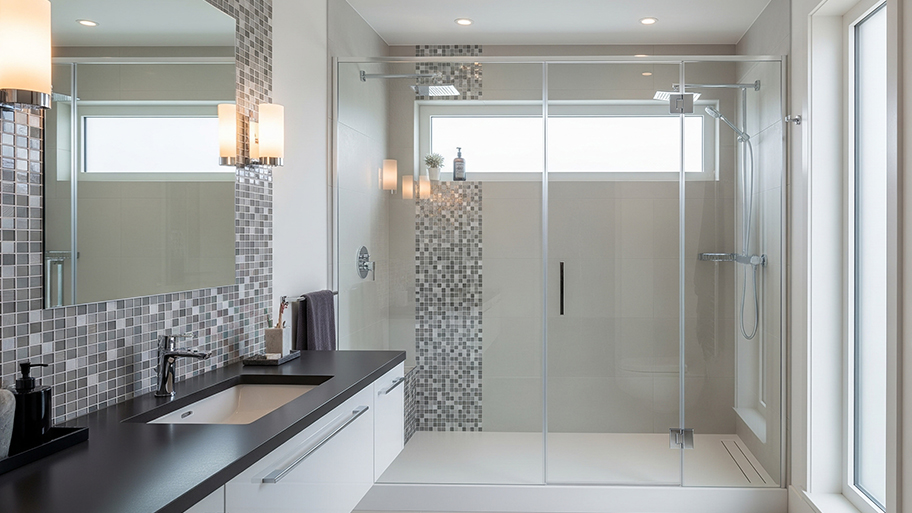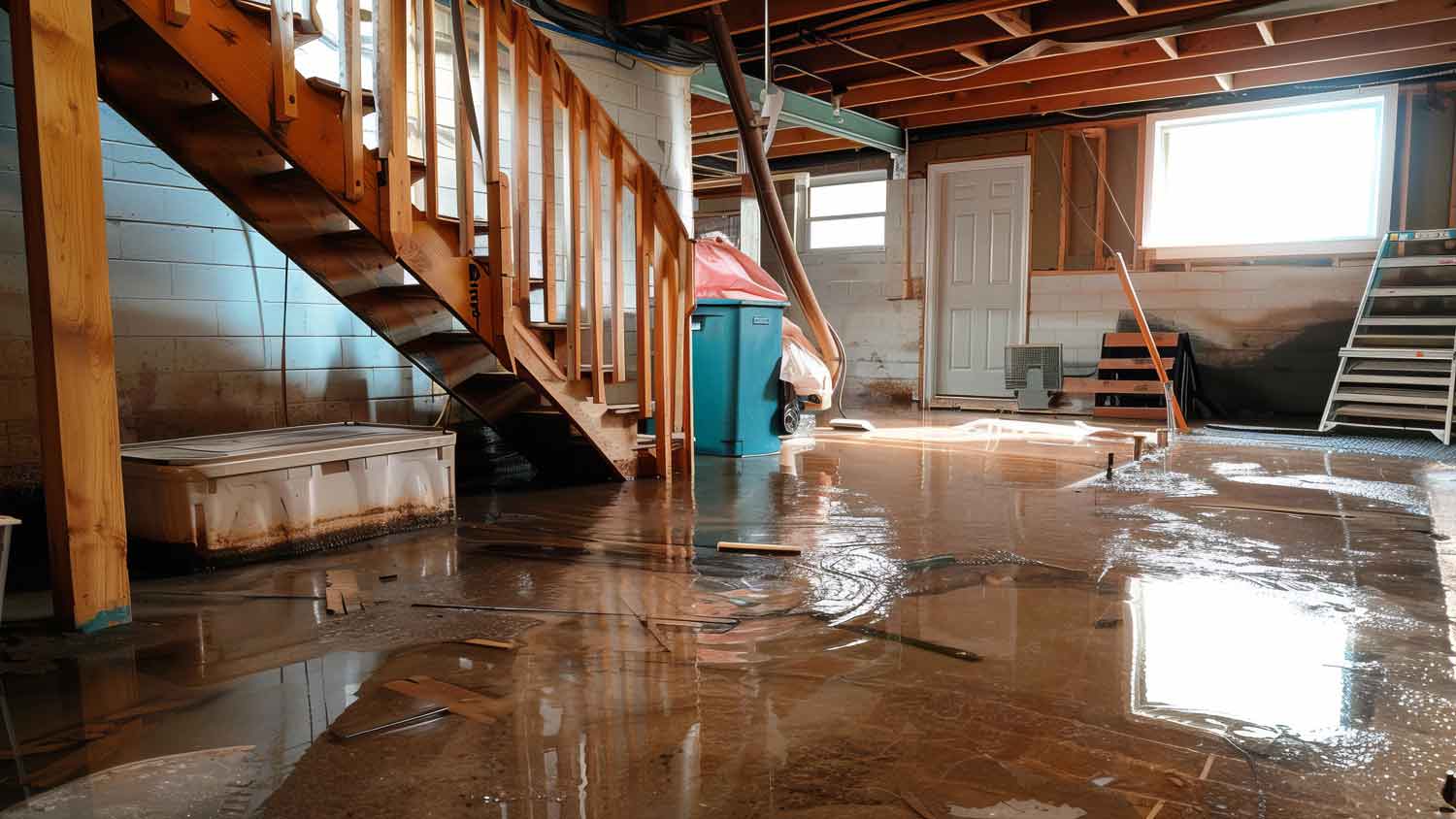
Fire damage restoration costs vary widely based on the extent of the damage. Learn how to assess your home and estimate your total after a fire.
Tip the scales in your favor with these insurance claim tips


Finding extensive water damage in your home can be stressful, especially when you start thinking about the repair bills you’ll soon face. Water damage restoration costs an average of $3,800, but in many cases, your homeowner’s insurance will cover all or part of the cost. Here are some water damage insurance claim tips to help you get approval for your restoration.
First, you’ll need to identify and fix the source of the leak to mitigate the damage, so you need to know who to call to address water damage. A local water damage restoration specialist is your best option. These professionals can respond to emergencies and can tackle all of the work you need, including pumping out standing water, drying your building materials to prevent mold growth after water damage, and even restoring your property to its original condition.
Finding the water leak, minimizing the damage, checking for mold, and getting repair estimates underway immediately can help you get insurance approval, as delays could be considered negligence, which may lead to claim denials. You don’t need to get all the work done immediately, but at least have a professional mitigate further damage by stopping the leak or pumping out standing water and drying your living space. A water damage restoration company is best because they can tackle everything, from locating an underground leak to fixing a leaking toilet tank and everything in between.
Once the underlying issue is under control, contact your insurance provider to report the problem and start the claim process. It’s a good idea to take pictures of all of the damage, although most water damage restoration companies you hire will know how to take photos for you. Schedule an inspection with an insurance adjuster as soon as you can.
The truth is that most people haven't memorized the fine details of their homeowner policies. That's why the next step is to get a copy of your policy in front of you. Knowing exactly what's covered will prepare you for a conversation with your agent.
Most policies only cover accidental water damage, like damage from hurricanes, tropical storms, fallen trees, and floods. Plumbing breaks normally aren’t covered by insurance, but there’s a chance your policy does cover it, so look carefully for what is and isn’t covered. You should also look at the details of what your provider will cover for covered events. For example, you may get coverage for water damage caused by a flood in your basement, but your insurer may only cover specific materials for replacement and require you to pay out of pocket for upgrades.
Understanding what is and isn’t covered is a good place to start the discussion with your insurer. You can also use the information to get an idea of how much of your repair estimate will need to come from you.
Another tip that can help expedite the process and lead to an approved claim is getting multiple quotes from local water remediation specialists. It’s a good idea to get an estimate from the contractor your insurance company recommends, even if you don’t ultimately go with that contractor. Call at least two other companies for repair estimates, and share your insurance approval with your contractor only after they provide their estimates.
Having multiple quotes will give you a better idea of what a fair price for the repairs is, and you can sometimes use that to negotiate with your insurance provider to get a higher approval amount if their contractor comes in unusually low.
You’ll likely be itching to get repairs underway as quickly as possible, but make sure you wait until you have formal approval for a specific contractor and a specific estimate before you carry out any repairs. Doing repairs before you have approval can cause issues with insurance payouts, even if you eventually get approval. Be as patient as possible, and rest assured that at least your home isn’t experiencing further damage.
Negotiating with your contractor and insurance provider is a delicate task but one that’s well worth it in the end. In your search for licensed contractors, you’ll come across some who aren’t willing to budge on their prices. Alternatively, others may be willing to negotiate. A contractor might be interested in reducing their price if you share a more competitive offer from another company.
Similarly, you can sometimes negotiate with your insurance provider to get a higher approval amount. You may need to provide quotes from contractors or even hire your own adjuster, but doing so can be well worth the time if it means a higher approval amount.
Your insurance company will want to send an adjuster to your home to inspect the damage in person. Make sure that you're there to greet them. It's also important that you take the position that you have nothing to hide. While it can feel like you're being investigated when an adjuster begins poking around to take photographs and jot down measurements, these steps are all standard parts of the adjustment process. Your adjuster is also likely to ask you questions about the specifics of how the damage occurred.
The adjuster's main goal is to estimate the total cost of repairs. It's important for the information to be as accurate as possible because it helps to determine your payout. The adjuster is also attempting to determine if anyone is at fault due to neglect or intentional acts.
It's normal to feel nervous when an adjuster asks questions to determine if a leak was caused by human error. Keep in mind that water damage caused by a leak that is your fault may still be covered as long as the cause was accidental. The good news about an adjuster's investigation is that it may actually determine that the water damage was caused by a plumber or another contractor. If this is the case, you may not be forced to pay the deductible owed on the claim.
Once your claim has been fully submitted, your insurance company will contact you with a settlement offer. Your goal is to verify that the amount being offered is enough for you to make the repairs or updates needed to restore your home to its pre-leak condition with help from a professional water damage restoration company. Pay close attention to the approved amount, the line items that are approved, if applicable, and the timeframe for the repairs.
If you don’t think your compensation is appropriate and feel overwhelmed by the thought of going back and forth to request changes to the settlement, you are 100% entitled to seek legal help. Your agent can also help you ask for small changes in the settlement terms.
It may amount to tons and tons of paperwork, but you need to save all of your insurance claim documents to keep a record of the claim process and its outcome. These documents will act as proof that you filed a claim and include important information, such as financial details that lay out payments made by the insurance company, reimbursements, and received settlements. You may even need these documents if you have to file another claim related to the same water leak.
You should also save any documents you get from your specialist related to the water damage restoration process, including change orders for hidden damage, receipts, and more. These can come in handy if anything is ever disputed.
From average costs to expert advice, get all the answers you need to get your job done.

Fire damage restoration costs vary widely based on the extent of the damage. Learn how to assess your home and estimate your total after a fire.

Fire hydrant costs might not be an expense you think about day-to-day, but they’re important to consider for the safety of your home.

Water damage restoration costs depend on the severity of the problem, the type of water, and the length of time the damage has been occurring.

Discover the step-by-step water damage restoration process, from drying, to sanitizing, to full repair of your drywall and flooring.

Discover flooded basement cleanup cost estimates, key price factors, and tips to save money. Learn what impacts your total cost and how to budget for cleanup.

Facing a wood rot problem and don't know where to turn for help? Learn who fixes wood rot to restore your home's structure.